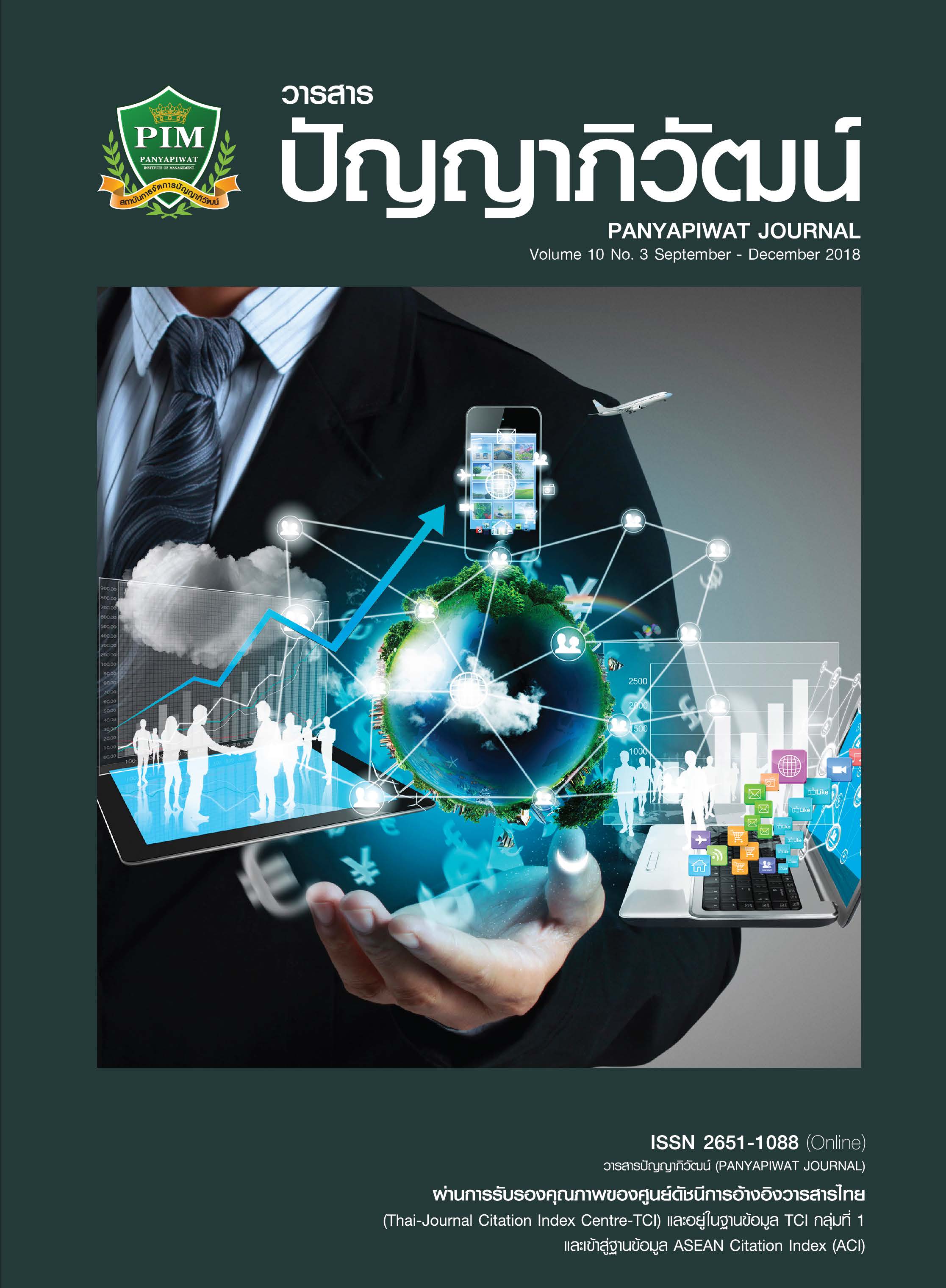Computational Thinking กับการศึกษาไทย
Main Article Content
บทคัดย่อ
ในปัจจุบันประเทศไทยต้องมีการจัดการศึกษาเพื่อให้สอดคล้องกับประเทศไทยยุค 4.0 ซึ่งต้องให้ความสำคัญกับทักษะของผู้เรียนในศตวรรษที่ 21 และ Computational Thinking เป็นกระบวนการคิดที่ต้องใช้ทักษะและเทคนิคเพื่อแก้ไขปัญหา Computational Thinking เป็นทักษะที่สำคัญทักษะหนึ่งที่ทุกคนจำเป็นต้องพัฒนาขึ้น เพราะเป็นทักษะที่มีความเกี่ยวข้องกับทักษะเสริมศักยภาพอื่นๆ ในศตวรรษที่ 21 ซึ่งกระบวนการคิดนี้มีการส่งเสริมโดยใช้การเขียนโปรแกรมเป็นหลัก เพื่อให้ผู้เรียนเข้าใจวิธีการแก้ปัญหาโดยคอมพิวเตอร์ และเพื่อพัฒนาตรรกะและทักษะในการแก้ปัญหาของผู้เรียนเอง ดังนั้นจึงต้องมีการส่งเสริมให้ผู้เรียนเกิดทักษะและกระบวนการคิดที่สามารถนำไปใช้แก้ปัญหาในชีวิตประจำวันได้อย่างมีประสิทธิภาพ
Article Details
“ข้าพเจ้าและผู้เขียนร่วม (ถ้ามี) ขอรับรองว่า บทความที่เสนอมานี้ยังไม่เคยได้รับการตีพิมพ์และไม่ได้อยู่ระหว่างกระบวนการพิจารณาลงตีพิมพ์ในวารสารหรือแหล่งเผยแพร่อื่นใด ข้าพเจ้าและผู้เขียนร่วมยอมรับหลักเกณฑ์การพิจารณาต้นฉบับ ทั้งยินยอมให้กองบรรณาธิการมีสิทธิ์พิจารณาและตรวจแก้ต้นฉบับได้ตามที่เห็นสมควร พร้อมนี้ขอมอบลิขสิทธิ์บทความที่ได้รับการตีพิมพ์ให้แก่สถาบันการจัดการปัญญาภิวัฒน์หากมีการฟ้องร้องเรื่องการละเมิดลิขสิทธิ์เกี่ยวกับภาพ กราฟ ข้อความส่วนใดส่วนหนึ่งและ/หรือข้อคิดเห็นที่ปรากฏในบทความข้าพเจ้าและผู้เขียนร่วมยินยอมรับผิดชอบแต่เพียงฝ่ายเดียว”
References
Angevine, C. (2017). Advancing Computational Thinking Across K-12 Education. Retrieved February 15, 2018, from https://digitalpromise.org/2017/12/06/advancing-computational-thinkingacross-k-12-education/
Codecombat. (2018). Codecombat. Retrieved February 15, 2018, from https://codecombat.com/
Cuny, J., Snyder, L. & Wing, J. W. (2010). Demystifying Computational Thinking for Non-Computer Scientists. work in process.
Fraser, N. (2015). Ten things we’ve learned from Blockly. In Proceedings of the IEEE Blocks Beyond Workshop 2015.
Google for Education. (2018). Exploring Computational Thinking. Retrieved February 15, 2018, from https://edu.google.com/resources/programs/exploring-computational-thinking/
Humdani, S. K. (2017). Coding: What is the need for children? Retrieved February 15, 2018, from https://themomentum.co/coding-for-kids/ [in Thai]
Kirtikara, K. (2015). From teaching to learning: (Knowledge) (Skill) (Attitude) Higher order Thinking and Working Skills. Bangkok: Ministry of Education. [in Thai]
Microsoft Thailand News Center. (2015). Microsoft Survey Reveals Thailand students want to learn to code a core subject in schools. Retrieved February 15, 2018, from https://news.microsoft.com/th-th/2015/03/21/codingevent_th/ [in Thai]
Ministry of Education. (2008). The Basic Education Core Curriculum B.E. 2551 (A.D. 2008). Bangkok: Kurusapa Printing Ladphrao. [in Thai]
Panich, V. (2012). Way of learning for students in the 21st century. Bangkok: Sri Fresh Foundation–Sarit Wong. [in Thai]
Panich, V. (2016). Creating a 21st Century Learning Skills (3rd ed.). Bangkok: The Siam Commercial Foundation. [in Thai]
Poolsawas, B. & Dokprakhon, P. (2016). Visual Programming and Computational Thinking Game. Journal of Information Science and Technology, 6(2), 9-16. [in Thai]
Poolsawas, B. (2016). Systematic thinking Computational Thinking for Teachers by Google. Retrieved February 12, 2018, from https://www.edtechthai.com/2016/08/09/computation-thinking/ [in Thai]
Poovarawan, Y. (2016). Basic Education with Computing Science and Computer Science. Retrieved February 12, 2018, from https://www.facebook.com/permalink.php?story_fbid=10206862992871000&id=1162233576 [in Thai]
Rujjanapan, B. (2015). Blockly visual Development Tools. Retrieved February 12, 2018, from https://www.thaiall.com/blog/burin/6656/ [in Thai]
Sapgert, S. (2016). Learning Activities to strengthen the thinking process. With the learning management in full education. Academic Programs and Applications Grade 4 at ANUKUL NAREE School. Master of Education, Mahasarakham University. [in Thai]
Techtalkthai. (2016). Google debut Project Bloks. Retrieved February 15, 2018, from https://www.techtalkthai.com/google-announced-project-bloks-for-physical-coding/ [in Thai]
Thanathani, S. (2014). Learn how to code with code.org. Retrieved February 15, 2018, from https://www.vcharkarn.com/varticle/500070 [in Thai]
The institute for the promotion of teaching science and technology. (2017). Computational Thinking. Retrieved February 12, 2018, from https://celt.li.kmutt.ac.th/mock/km/wp-content/uploads/2017/10/170802.1-Computational-Thinking.key.pdf [in Thai]
Wing, J. M. (2006). Computational Thinking. Communications of the ACM, 49(3), 33-36.

